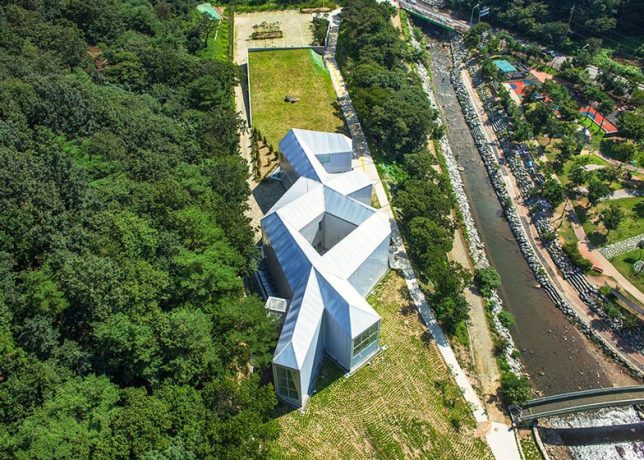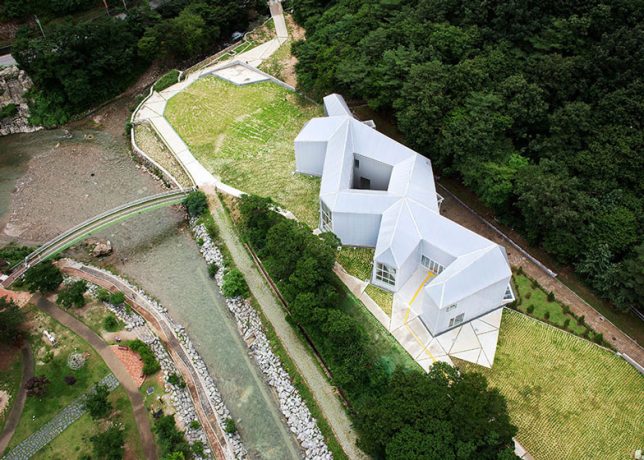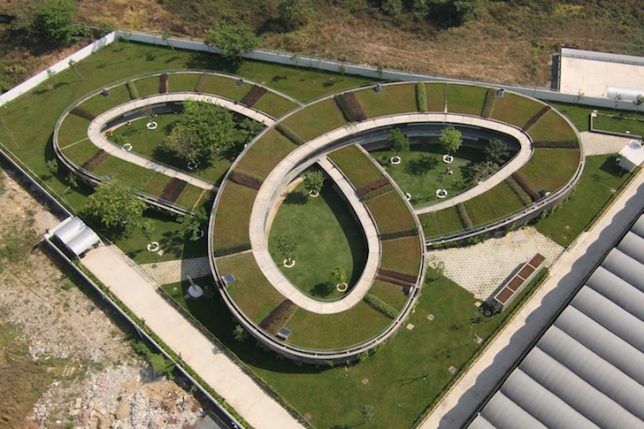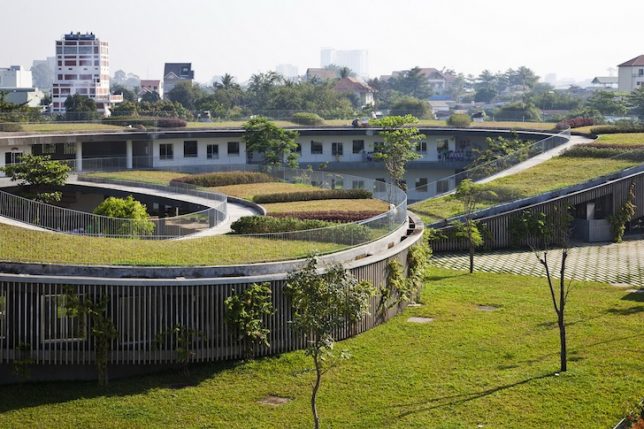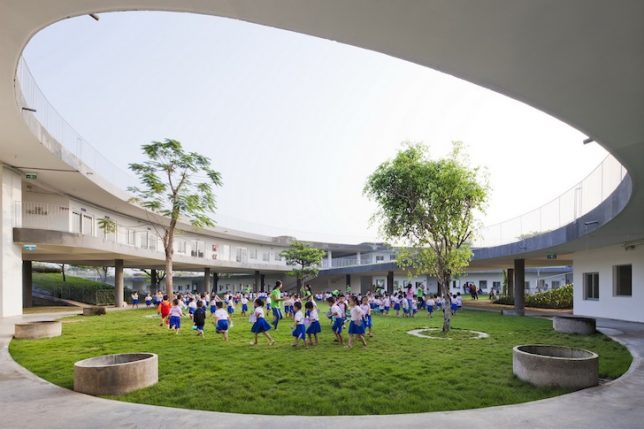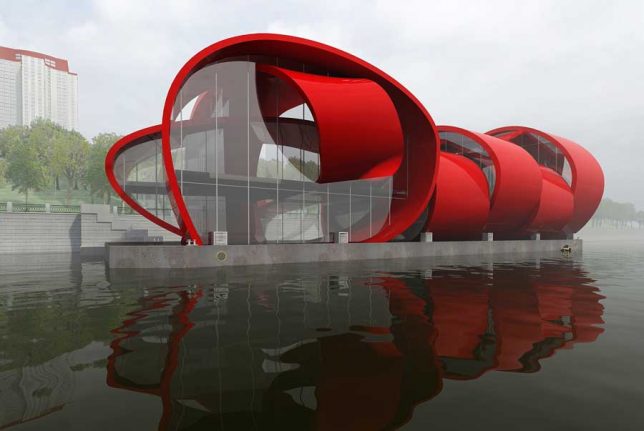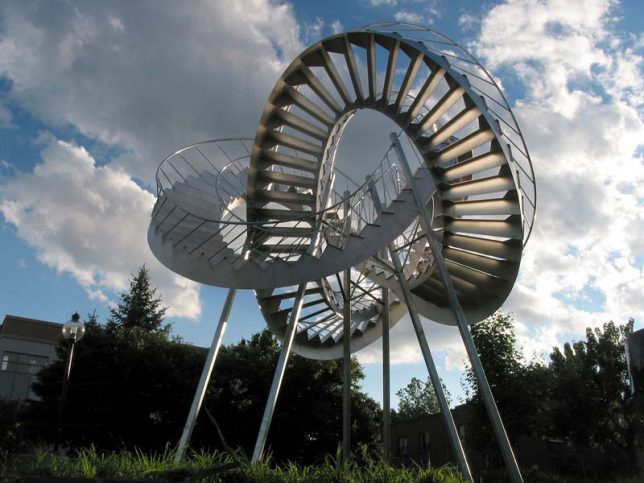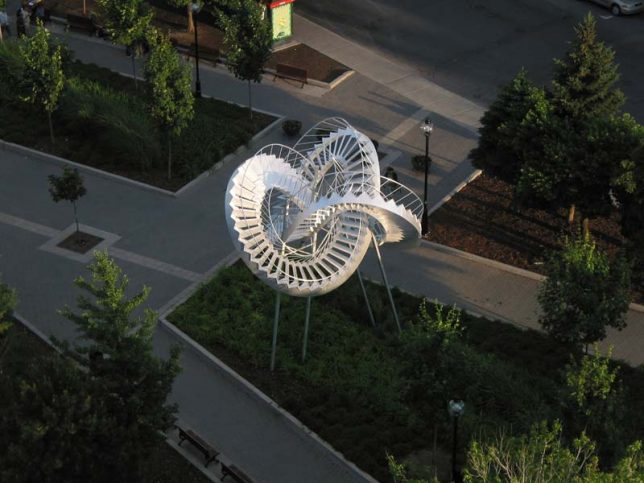Knot-Shaped Museum by Chae Pereira Architects
This mountainside museum dedicated to artist Chang Ucchin by Chae Pereira Architects mimics the the knotted elements of the artist’s paintings, so the structure feels like an extension of his work. The resulting interior space feels a bit like a labyrinth, yet double-height areas are staggered throughout so visitors can orient themselves. The design deliberately creates contrasts and shadows to set it apart from conventional, evenly-lit gallery spaces.
Farming Kindergarten by Vo Trong Nghia Architects
This sustainable kindergarten in Dongnai, Vietnam by Vo Trong Nghia is topped with a green roof that’s accessible from ground level outside so students can learn the importance of caring for the environment. The spiraling green roof on the knot-shaped building is capable of growing more than enough food for the school’s 500 students, and remains lush and green year-round.
Knot Concept by Pole Design
‘The Knot’ by Pole Design is a “multipurpose riverside entertainment center” designed to stand on a platform beside the river’s surface, mimicking a silk bow tied around a gift. “The exterior and interior of the building do not follow the traditional parameters of floors, walls and ceilings,” say the designers. “On the contrary, upon entering the structure, you feel an endless circular movement of surfaces, the gaps between which occur in completely unpredictable places, providing unexpected views of the river and the city.”
Revolutions Staircase by Michel de Broin
This staircase won’t actually get you anywhere but up in the sky, staring up at the clouds, holding onto the railing for dear life because the stairs are actually upside down. That’s okay – it’s just a sculpture, and not functional. ‘Revolutions Staircase’ by Michel de Broin is a public commission by the city of Montreal. “The sculpture was inspired by the exterior winding staircases central to Montreal’s identity,” says de Broin. “By forming a knot, the staircase deconstructs the symbolism of vertical ascension with which it is usually associated. Here, the staircase enters an endless cycle of revolutions, in which whatever goes up must come down.”
